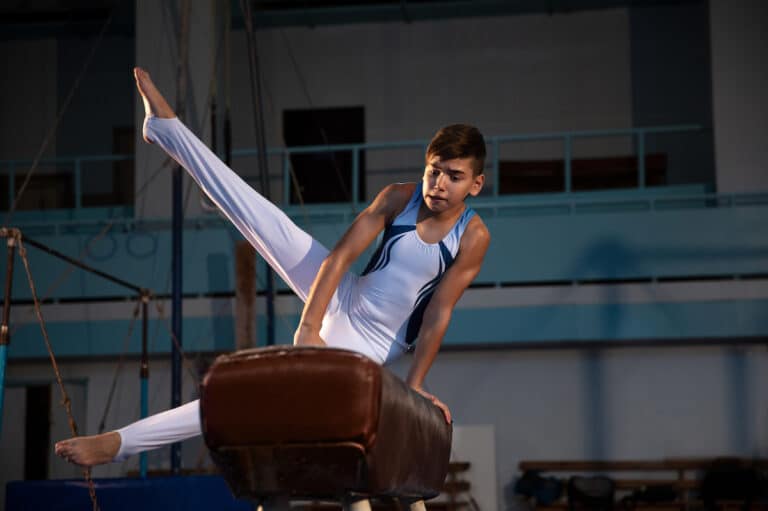Sioux Falls Argus Leader: Sioux Falls school district fails to get Title IX right

In April 2023, the Sioux Falls School District eliminated its girl’s gymnastics program for the 2023-24 school year, pointing to a decline in student interest and difficulty finding qualified coaches. In response, disappointed families filed a federal lawsuit against the school district alleging the decision to eliminate gymnastics violated the gymnasts’ rights to be free from sex-based discrimination. After the families obtained a preliminary injunction halting the elimination of gymnastics in October, the school district appealed. Recently, it was announced that the school district plans to cap the number of boys permitted to participate in athletics as soon as spring 2024.
Should the school district follow through with restricting opportunities for boys to compete, its decision would violate the U.S. Constitution.
At the core of the gymnastics lawsuit and the school district’s recent decision to cap opportunities for boys is the mistaken notion that Title IX—the federal law mandating equal opportunity in education—requires the ratio of boys and girls participating in athletics to substantially match the ratio of boys and girls enrolled in the School District.
The gymnastics lawsuit hinges on the fact that for the 2022-23 school year, girls were underrepresented in athletics compared to boys. “Underrepresentation” means that the ratio of boys participating in sports in the school district is slightly higher—7%—than the ratio of boys enrolled in the school district. In ordering the gymnastics program reinstated while the case proceeds, the district court held that this underrepresentation—which was worsened by the elimination of gymnastics—violates Title IX. If the district court is not reversed on appeal, the school district only has two options to address that disparity: add opportunities for girls or cut them for boys.
But Title IX and case law expressly state that schools are not required to achieve “proportionality.” Were it otherwise, the antidiscrimination law would contradict itself by authorizing participation quotas like those just announced by the School District that limit opportunities for boys—and only boys—to participate.
Sex-based quotas do not benefit anyone. Capping opportunities for one sex to compete does not increase opportunities for the other sex. Quotas also turn Title IX on its head and assume that students’ interests in sports must match the sex-based makeup of the district. The point of Title IX is to prohibit discrimination in educational programs. But sex-based quotas only achieve statistical balance by reducing numbers on one side of the ledger.
Since Title IX’s enactment, the number of girls participating in high school sports increased from nearly 300,000 in 1972 to more than 3 million in 2011, with boys increasing from 3.6 million to 4.5 million in the same span. College sports have seen the same trend.
While the overall trend has seen increases in athletics participation, there have also been notable reductions in some sports, particularly non-revenue collegiate sports. For example, in 1969 there were over 200 men’s collegiate gymnastics teams; as of 2021, only 15 remained. There have also been notable instances of institutions refusing to establish new teams and limiting participation on other teams to a single sex. Student interest and competitiveness concerns, as well as budget and other resource limitations explain some reductions and limitations, but the mistaken idea that proportionality is required is also to blame for many restrictions on athletics opportunities.
When members of one sex are singled out for a reduction in opportunities, educational institutions cross an unconstitutional line. The Fourteenth Amendment’s Equal Protection Clause prohibits the government from discriminating on the basis of sex unless there is an exceedingly persuasive justification that discrimination is necessary to address an important governmental objective. Achieving a statistical balance between the student body and athletics rosters is not a sufficient justification for capping the number of boys in athletics. It’s just an impermissible quota.
In 2018, North Sioux City teenager Freddie Linden sued the South Dakota High School Activities Association after he was prevented from trying out for the Dakota Valley High School competitive dance team solely because of his sex. The lawsuit spurred SDHSAA to change its rules to allow boys to participate in competitive dance.
Similarly, two Minnesota high school boys took their case challenging the Minnesota State High School League’s ban on boys in competitive dance all the way to the U.S. Court of Appeals for the Eighth Circuit, where they won in 2019.
It is understandable that given the status of the gymnastics lawsuit, the shool district finds itself in a tough spot. But the District should not invite a second lawsuit by singling out boys in an effort to comply with a misguided understanding of Title IX.
This op-ed was originally published in the Sioux Falls Argus Leader on January 14, 2024.








